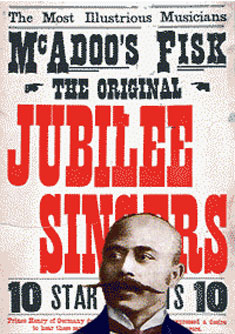South African music: minstrels
In the mid-1800s, travelling minstrel shows began to visit South Africa.
At first, as far as can be ascertained, these minstrels were white performers in "black face", but by the 1860s genuine black American minstrel troupes had begun to tour the country, singing spirituals of the American South and influencing many South African groups to form themselves into similar choirs.
Regular meetings and competitions between such choirs soon became popular, forming an entire sub-culture unto itself that continues to this day in South Africa.
Orpheus McAdoo and the Virginia Jubilee Singers were among the most popular of the visiting minstrel groups, touring the country four times (some of his troupe's members, in fact, decided to stay in South Africa). McAdoo was a hero to South Africans of colour, as a model of what a black man could achieve.
This tradition of minstrelsy,
joined with other forms, also contributed to the development of
isicathamiya, which had its first international hit in 1939 with "Mbube".
This remarkable song by Solomon Linda and the Evening Birds was an adaption of a traditional Zulu melody, and has been recycled and reworked innumerable times, most notably as Pete Seeger's hit "Wimoweh" and the international classic "The Lion Sleeps Tonight".
Minstrelsy also gave form and a new impetus to the Cape coloured carnival singers and troupes, who began to use instruments such as the banjo in styles of music such as the jaunty
goema dance style.
SAinfo reporter




